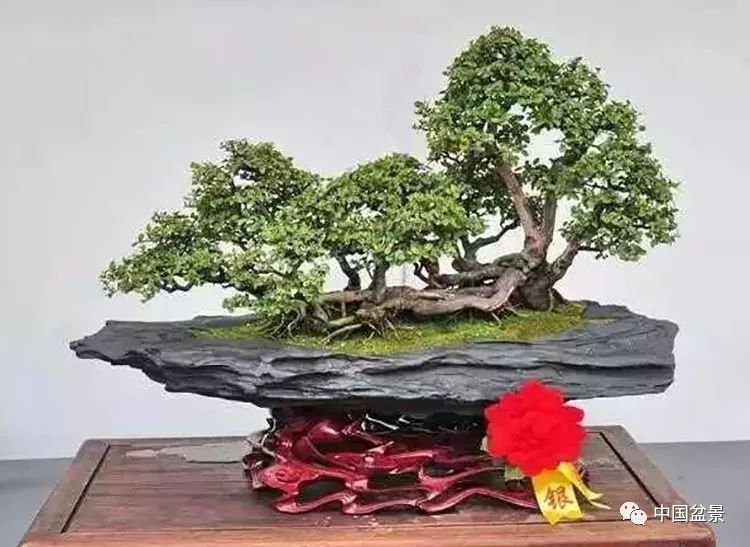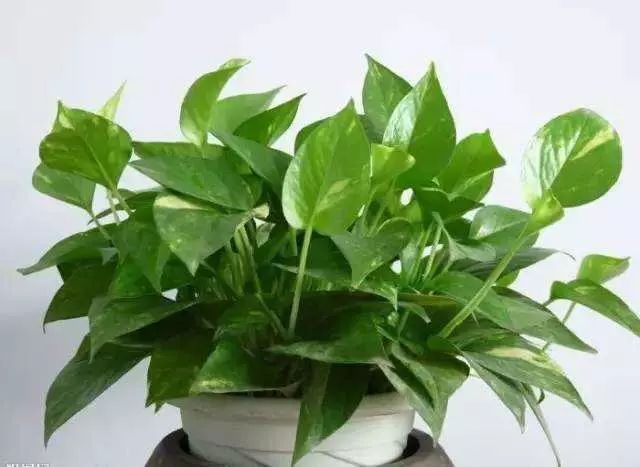Bonsai people's perception: natural modeling is the only way for bonsai innovation.

[feelings of bonsai people]
Text | Xiamen, Fujian @ Zhou Yingzhi
The water is as flat as a mirror, and the clouds and the moon are happy. Water, with a calm and light heart, gently drips away, gently bypassing the barrier, never caring, the heart is calm and light. Clouds, free, floating in the sky, stretched and elegant, go and stay in mind, float over the mountains and across the sea, leaving no trace, free and serene. Life, put the heart flat, is a calm water; put the heart light, is a comfortable cloud.
[bonsai]
Natural styling is the only way for Bonsai Innovation
Author | Flower bonsai
This article is selected from Flower Bonsai Network, and the copyright belongs to the original author.
In the past, most of the bonsai production in our country followed the tradition, mainly based on regular modeling, with strong craft flavor, obvious traces of artificial production, the same form of works and lack of new ideas. Under the influence of the past literati bonsai and contemporary natural bonsai, today, people's aesthetic concept and aesthetic taste have changed greatly, and the desire to return to nature is becoming stronger and stronger. Bonsai, an art form that expresses natural beauty, meets the psychological needs of modern people to some extent. Therefore, bonsai with natural shape has become the mainstream of bonsai creation in our country. The natural bonsai works with innovation and personality are more and more loved by people, which fully shows the new achievements made in the development of bonsai cause in our country. For example, in the pine bonsai works, Hu Lequo and Pan Zhonglian created natural pine bonsai with high dry branches, "Xiang Tianya" (figure 14-1) and "Liu Songnian pen" (figure 14-2).
They learn from nature and neither pursue sturdy and strange wood, nor turn it upside down. After their trimmed, flat tie, condensed shape, they still maintain a high-dry (straight or curved dry) skeleton, vigorous and upright, majestic, tree-shaped and green needles. Its masculine beauty shows the natural nature and spiritual style of pine trees, giving people a kind of positive strength. Hu Leguo's new pine tree Ta GE Xing (Picture 14-3) still insists on the natural style of towering double trunk, turning natural and leaning against power. The undulating branches have been combed in shape, there are changes in the unity, and there is no trace of artificial production. The appearance repeats neither oneself nor others, which is an excellent work in the form innovation of natural pine bonsai.
Fortunately, in recent years, a new form of pine bonsai has appeared in the creation of pine bonsai, that is, mountain pine bonsai represented by Han School year (Fig. 14-4, Fig. 14-5). He used Pinus massoniana (Pinus massoniana), which is unique to Guangxi, as material. The trunk of this kind of mountain pine is different from the common pine tree in shape, which is long and curved. The author is good at making use of this material, applying art in accordance with his aptitude, and making efforts on the modeling of branches, dried stems and roots. After careful cutting and preservation, retain the most beautiful parts of the stem and branch, highlight the length, square and frustration changes of the stem and branch. Although it has been artificially bound, the lines of dry and branches turn naturally, like using a paintbrush, soft and firm, with the rhythmic beauty and rhythmic beauty of cursive Chinese characters, showing a kind of inner strength. This kind of "cursive style" bonsai is unique, wild, unique and refreshing. Compared with the pine bonsai of Pan Zhonglian and Hu Leguo, although the style is very different, it is the innovative masterpiece of natural pine bonsai.
On the contrary, some pine bonsai only want to be short and strong, the gap between branches is very small, there are only needles, no blanks and skeletons, and finally they can only be squeezed together to form large mushrooms with the same shape, which can no longer be created (figure 14-6). This shows that because there is no fixed pattern, it is more difficult to create individual bonsai works with high dry branches and pine trees than to make regular bonsai. But there is no doubt that natural bonsai provides a broad space for innovation.
Most of the trunks of miscellaneous wood bonsai are collected from the mountains, the shape changes naturally, and most of the branches are artificially molded. At present, most of the branches of miscellaneous wood bonsai are flat, each plant has a floating branch or a falling branch, and the shape of the branches is mostly triangular, and the phenomenon of similarity in shape is common. The natural bonsai with real personality and innovation are Lu Xueming's red fruit bonsai (figure 14-7) and Wu Chengfa's triangular plum bonsai with heavy purple shade (figure 14-8). They all advocate nature, use the technique of "storing branches and cutting dry" in Lingnan, and pursue the natural style. What I would like to put forward here is the dynamic bonsai created by he Yisun, such as "the Wind is roaring" and "Autumn thinking", which breaks the traditional mode, grasps the instantaneous image of the tree fighting against the wind in nature, and solidifies it in the shape of the integration of trees and stones. As soon as this new form appeared, it was appreciated by people and imitated by many people at a time. Later, due to more similar works, this new form was gradually snubbed. But he played an important role in promoting the innovation of bonsai in our country.
He Yisun bonsai "the wind is roaring"
He Xisun's "Autumn thoughts" on Bonsai
In terms of flood and drought bonsai, there is "listening to Tao" by Zhao Qingquan (figure I4-9). The tree and stone bonsai has the "return" of he Tusun (figure 14-10). They draw nourishment from nature and life, and their shapes are novel, just like Tiancheng, full of poetic feelings, and inject new vitality into flood and drought bonsai and tree-stone bonsai. And Zhang Yi's landscape bonsai "Inkstone Dream talk?" The Moon Mountain Wind is lonely and green (figure 14-11), which distances itself from the usual stylized techniques (such as each basin of mountains, one big and one small, one high and one low), both in content and in form. He uses the law of formal beauty and the composition techniques in modern process design, and uses the self-made curved polygon basin to combine rocks, trees and furnishings into points, lines and surfaces, so as to make the scenery novel in form, simple in structure and expanded in space. the picture is full of interest in life and forms an artistic style that is different from others.
Most of the innovative works introduced above are written by masters or celebrities. The excellent works of bonsai writers who innovate in form often appear. Such as Bian Hai's creation of cypress bonsai, make full use of some undesirable, poor conditions of the material, art in accordance with their aptitude, in the form of originality, deliberate innovation. When dealing with Shili dry, we should not only pay attention to simplicity and integrity, but also pay attention to dealing with the relationship with branches and leaves, so that their beauty can be fully displayed. Each of his works, in the form of neither others nor himself, is very innovative, such as his juniper cypress (Fig. 14-12). And his jungle bonsai "single Tree Forest" (Fig. 14-13a, Fig. 14-13b, Fig. 14-13c, Fig. 14-13d) is made from a general five-needle pine. What is commendable is that he is flexible in his creative ideas and dares to break the convention, taking the dry recumbent of five-needle pine as the angle of expression, and changing the branches growing horizontally into longitudinal. Into a jungle-style bonsai (at present, it will take time to improve the shape and interrelationship of branches and stems). The innovative spirit that he shows in his creation is not restricted by the program and dares to explore in form, which is worth affirming.
Wonderful playback:
Welcome to Chinese bonsai!
Bonsai exhibition hall that can be enjoyed at any time
Carry forward bonsai culture and exchange bonsai skills!
Enjoy bonsai art and share a happy life!
- Prev

The long mother-in-law put some of its leaves in the basin, the green leaves grow madly, the branches flourish and the leaves climb all over the wall.
Green pineapple is a common indoor plant. It has a good effect on greening the environment and absorbing fumes. It is easy to feed green pineapple, but it is difficult to raise it well. If you see other people's green turnips grow a few meters long, your own ones do not grow. I will share them with you today.
- Next

People who love to grow flowers have 6 common shortcomings. 100 flower friends admit it.
There are always some people who love to grow flowers around us. They are our relatives, friends, classmates, colleagues and maybe ourselves. People who like to grow flowers and stick to them all have shortcomings, which are well-founded.
Related
- Wuhan Hospital Iron Tree Blooming Result Was Instantly Frightened by the Gardener Master
- Which variety of camellia is the most fragrant and best? Which one do you like best?
- What is the small blue coat, the breeding methods and matters needing attention of the succulent plant
- Dormancy time and maintenance management of succulent plants during dormancy
- Minas succulent how to raise, Minas succulent plant pictures
- What are the varieties of winter succulent plants
- How to raise succulent plants in twelve rolls? let's take a look at some experience of breeding twelve rolls.
- Attention should be paid to water control for succulent plants during dormant period (winter and summer)
- Watering experience of twelve rolls of succulent plants
- Techniques for fertilizing succulent plants. An article will let you know how to fertilize succulent plants.

